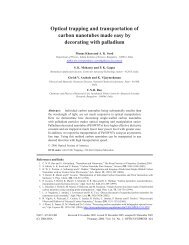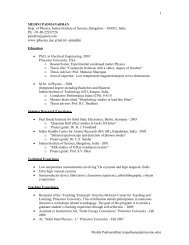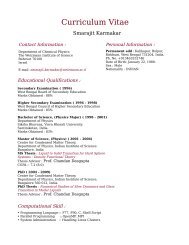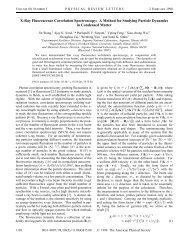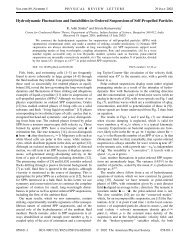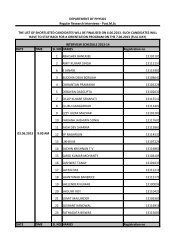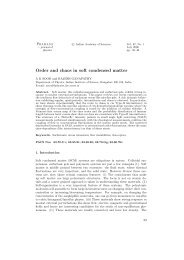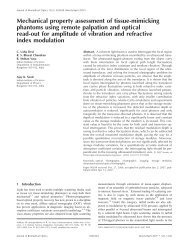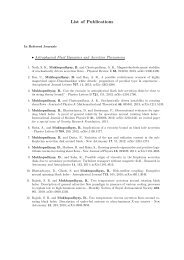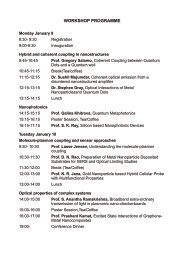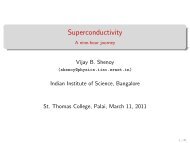Thermoelectric Properties of Fe0.2Co3.8Sb12-xTex ... - Physics
Thermoelectric Properties of Fe0.2Co3.8Sb12-xTex ... - Physics
Thermoelectric Properties of Fe0.2Co3.8Sb12-xTex ... - Physics
Create successful ePaper yourself
Turn your PDF publications into a flip-book with our unique Google optimized e-Paper software.
Sensory organ like response determines the magnetism <strong>of</strong> zigzag-edged honeycomb<br />
nanoribbons<br />
Somnath Bhowmick 1 , ∗ Amal Medhi 2 , † and Vijay B Shenoy 2‡<br />
1 Materials Research Center, Indian Institute <strong>of</strong> Science, Bangalore 560 012, India<br />
2 Centre for Condensed Matter Theory, Department <strong>of</strong> <strong>Physics</strong>,<br />
Indian Institute <strong>of</strong> Science, Bangalore 560 012, India<br />
(Dated: November 12, 2012)<br />
We present an analytical effective theory for the magnetic phase diagram for zigzag edge terminated<br />
honeycomb nanoribbons described by a Hubbard model with an interaction parameter U. We<br />
show that the edge magnetic moment varies as ln U and uncover its dependence on the width W<br />
<strong>of</strong> the ribbon. The physics <strong>of</strong> this owes its origin to the sensory organ like response <strong>of</strong> the nanoribbons,<br />
demonstrating that considerations beyond the usual Stoner-Landau theory are necessary to<br />
understand the magnetism <strong>of</strong> these systems. A first order magnetic transition from an anti-parallel<br />
orientation <strong>of</strong> the moments on opposite edges to a parallel orientation occurs upon doping with holes<br />
or electrons. The critical doping for this transition is shown to depend inversely on the width <strong>of</strong> the<br />
ribbon. Using variational Monte-Carlo calculations, we show that magnetism is robust to fluctuations.<br />
Additionally, we show that the magnetic phase diagram is generic to zigzag edge terminated<br />
nanostructures such as nanodots. Furthermore, we perform first principles modeling to show how<br />
such magnetic transitions can be realized in substituted graphene nanoribbons.<br />
PACS numbers: 75.75.-c, 73.20.-r, 75.70.-i, 73.22.Pr<br />
∗ bsomnath@mrc.iisc.ernet.in<br />
† amedhi@physics.iisc.ernet.in<br />
‡ shenoy@physics.iisc.ernet.in



